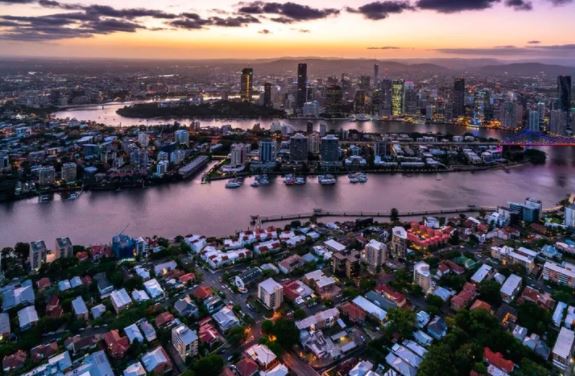Brisbane housing market insights for May reveals increased demand for houses and approvals for new units has been underpinned by increasing consumer sentiment and a surge in interstate migration.
This resource, to be updated monthly, will collate and examine the economic levers pushing and pulling Brisbane’s housing market.
Combining market research, rolling indices and expert market opinion, this evolving hub will act as a pulse check for those wanting to take a closer look at the movements across the market.
Brisbane’s typically slow-moving property market has continued to rise as part of a once-in-a-decade boom that experts say could fuel a further 10 per cent rise in house prices in the coming year.
Brisbane house prices have soared to record heights for the seventh consecutive quarter, with tight stock levels and strong demand across all demographics increasing competition.
Investors have also made their way back into the market and competition is heating up.
The latest Corelogic home value index shows Brisbane dwelling prices have risen by 1.7 per cent on a rolling four-week basis.
Brisbane house prices advanced a further 1.8 per cent during April, pushing it up 6.2 per cent for the recent quarter and 9.6 per cent for the year to date.
The current median value for dwellings is $558,295 which is $10,000 higher than just a month ago.
| Type | Month | Quarter | Annual | Median |
|---|---|---|---|---|
| All | 1.7%▼ | 5.6%▲ | 8.3%▲ | $558,295▲ |
| Houses | 1.8%▼ | 6.2%▲ | 9.6%▲ | $621,806▲ |
| Units | 1.0%▶ | 3.0%▲ | 2.4%▲ | $405,902▲ |
^Source: Corelogic Hedonic Home Value Index – April
The resurgence of buyer interest in the Brisbane property market has meant that auction clearance rates have consistently been in the 70 per cent range.
Clearance rates across April notably higher for houses compared to apartments, reflecting broader trends.
Hot spots included Brisbane’s inner city, inner east, inner west and the inner north – where house prices skyrocketed by 13 per cent over the past year to $1.2 million, 13.2 per cent to $1.053 million, 10.4 per cent to $1.17 million and 13.1 per cent to $1.1 million.
Brisbane auction clearance rates
| Week | Clearance rate | Total Auctions |
|---|---|---|
| Week ending 11 April 2021 | 80.9% | 123 |
| Week ending 18 April 2021 | 72.7% | 104 |
| Week ending 25 April 2021 | 76.2% | 105 |
| Week ending 2 May 2021 | 76.0% | 104 |
^Source: Corelogic Auction Clearance Rates – April
Brisbane is experiencing one of the tightest rental markets in a decade on the back of high demand coupled with extremely low supply.
Across April, Brisbane’s rental markets are experienced a tightening of supply, with vacancy rates currently sitting at 1.8 per cent.
Rental returns and yields have significantly increased in Brisbane, with rents soaring from 5 per cent to 15 per cent.
Gross rental yields sit at 4 per cent for houses and 5.2 per cent for units—much higher than other capital cities such as Sydney and Melbourne.
Some of the tightest vacancies across the capital’s suburbs include Anstead (0.5 per cent), Birkdale (0.3 per cent), Capalaba (0.2 per cent), Ferny Hill (0.3 per cent), Gumdale (0.4 per cent), Manly West (0.5 per cent), Rothwell (0.2 per cent), Sandgate (0.5 per cent), Shailer Park (0.4 per cent), Thornside (0.3 per cent) and Wakerley (0.4 per cent).
Brisbane residential rental vacancy rate
| City | April 2021 vacancy rate | Monthly % change |
|---|---|---|
| Brisbane | 1.4%▼ | 0.1%▼ |
^Source: SQM Research – April
Rental stock on market
| City | April 2021 vacancies | Vacancy net loss |
|---|---|---|
| Brisbane | 4780▼ | 627▼ |
^Source: SQM Research – April
Brisbane rent prices
| Type | Rent | Monthly % change | Annual % change |
|---|---|---|---|
| Houses | $489.10▲ | 0.5%▲ | 6.8%▲ |
| Units | $386.60▲ | 0.5%▼ | 2.8%▲ |
^Source: SQM Research – April
Brisbane’s housing market has remained particularly unaltered by the closure of international borders, where historically high demand from overseas migrants has been disrupted.
Tight stock levels and strong demand across all demographics have made it incredibly difficult not only to find a property to buy but to also secure something at a reasonable price.
Loan data shows investors have started coming back into a housing market they had largely vacated and the boom is being driven overwhelmingly by established owner occupiers.
Another big part of the demographic buyer base helping drive demand in Brisbane has been first homebuyers.
Brisbane’s proportion of home loans that remained on deferral at the end of March was just 0.7 per cent, indicating a very very low likelihood of distressed selling.
The seasonally adjusted estimate for total dwelling units approved in Queensland in March was 4547, 12.1 per cent up on February’s figures.
Queensland building approvals
^Australian Bureau of Statistics, (Suspension of trend series between May 2020 and Jul 2020 due to Covid-19)
| Dwelling | Approved | Monthly % change |
|---|---|---|
| Houses | 2792▲ | -4.0%▼ |
| Units | 4547▲ | 12.1%▲ |
Queensland home loan lending indicators
| Region | First home buyer loan commitments | First home buyer ratio – dwellings | First home buyer ratio – housing |
|---|---|---|---|
| Queensland | 3437▲ | 36.6%▼ | 32.3%▼ |
^Source: Australian Bureau of Statistics – March
| Region | September (quarter) 2020 arrivals | September (quarter) 2020 departures | September 2020 quarter net |
|---|---|---|---|
| Queensland | 22,317▼ | 15,080▼ | 7,237▲ |
^Source: Australian Bureau of Statistics – September quarter 2020
Brisbane’s housing market: policy updates
Australia’s central bank will maintain low interest rates to support the country’s ongoing economic recovery and surging housing market, buoyed by its busiest Easter auction market on record.
Strong tailwinds will bolster the Australian economy through the second half of the year, but macro-prudential measures are likely to be introduced to ease house price pressures in 2022.
Queensland faces a “hard road” during the next four years as the state recovers from the coronavirus pandemic, Treasurer Cameron Dick says.
Brisbane housing market forecasts
ANZ economists forecast Brisbane house prices will rise by 9.5 per cent next year, as low interest rates and government stimulus flow through the economy while Commonwealth Bank updated its forecasts, projecting a strong rebound in prices across the second half of 2021.
CBA now expects Brisbane house prices to increase by 16.6 per cent to December 2022 compared to 13.7 per cent in Sydney and 12.4 per cent in Melbourne.
Westpac has also updated its property forecasts, with Brisbane real estate prices tipped to surge 20 per cent between 2022 and 2023.
Source: QldPropertyInvestor.com.au
House prices are on the rise. Find out the value of your property now.
Get a free online property report from Hicks Real Estate. It takes seconds.






